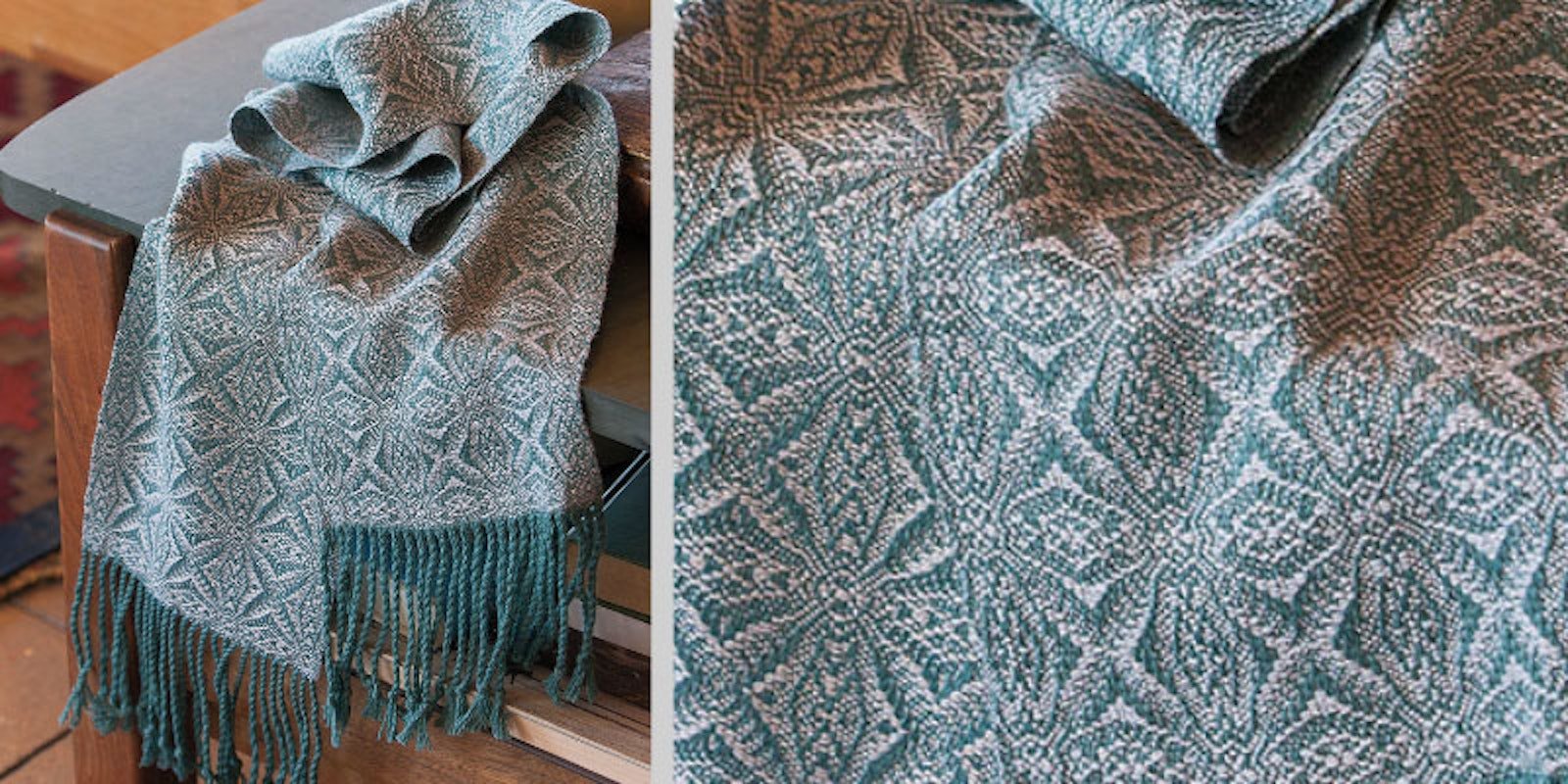
This sample of Parachute, a miniature overshot pattern from Weaving Designs by Bertha Gray Hayes, is woven in star fashion.
If there is one aspect of weaving that I would like to share with new weavers, it is that understanding the basics of weave structures allows you to weave with numerous treadling variations on a single warp. You have likely noticed that in collections of weaving drafts, it is common for more than one treadling to accompany a threading. What may not be obvious is that you can mix and match threadings and treadlings within and outside of a structure.

Parachute threading woven in rose fashion
I was introduced to the thrills of treadling variations several years ago in a workshop taught by Susan Wilson, author of Weave Classic Crackle & More. Since then, I have continued to play with this idea knowing that I’ll never have enough time to weave all of the possible combinations.
For example, you may thread your loom according to a particular overshot draft and treadle by observing a sequence given with the draft which may include a star or rose treadling. (If you are a new weaver and unfamiliar with those overshot terms, star describes overshot weave structure that is woven as drawn in or trompt as writ. Rose describes an overshot treadling where the treadling order swaps blocks such as treadling B for A and vice versa as well as D for C and vice versa on 4 shafts.) Your experimentation might include borrowing a treadling from a different overshot draft or even another structure such as summer and winter, crackle, or even lace. I mean, who doesn’t giggle at the thought of weaving lace on an overshot threading?

Parachute threading treadled with the Turntable treadling also from Weaving Designs by Bertha Gray Hayes.
You can also take a threading and adapt it to create a treadling, if you understand the structures well enough to make necessary modifications. Let’s say you want to treadle your overshot threading as a straight draw (1, 2, 3, 4). This would translate to blocks A, B, C, D and you would treadle each block the desired number of times.
Another great benefit to understanding weave structures is the freedom you gain from having to keep track of where you are in a treadling sequence. Now, I haven’t figured out how to do this every time I weave but when it works it allows for effortless treadling and frees my mind for more contemplative activity.

Parachute threading treadled as a straight draw.
As you travel through this warped world, you will undoubtedly hear “thou shalts” from experienced weavers and teachers. Often, you are being presented with good advice, but sometimes give into that tug when curiosity pulls you in a different direction. With an understanding of weave structures, even when your results are unsatisfactory, chances are you will still benefit from the journey of your own exploration.
Stay warped!
– Pattie

